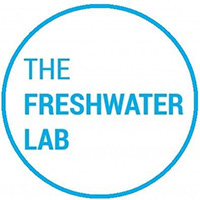A vital component of climate change adaptation involves rejecting single use plastic. Individual acts like refusing straws and plastic cutlery and structural changes like sourcing materials from plants rather than petrochemicals all help to reduce the toxic waste mounting around us. A wrapper that you pull off in seconds will outlast you by many thousands of years.
In a similar vein, we should not contain life-sustaining water in harmful plastic bottles. Instead, water sourced from particular springs and taps should provide benefits to the local waterworks and ecosystem. The bulging bottled water profits of multinational corporations can become revenue for utilities and public companies whose earnings are reinvested in water infrastructure. Containers for such genuinely artisanal water can be made from biodegradable materials available in the region (get ready for corn husk bottles, Illinois).
As important as rejecting single use plastic is avoiding single use water. Our current system relates to water in single use terms. For example, as soon as you wash your hands, the water goes down the drain. Such ways of relating to water are flawed because all the water that moves through the earth already exists. Not only do we have all the water that we are ever going to receive, but it is also disappearing due to the warming of the planet. We harm ourselves by turning water that we use once into waste. Words matter: assigning the label of waste to water sanctions actions like the dumping of poisonous compounds. We then encounter this water again as something dangerous.
Multi-use water, in contrast, involves cycling water through our world in ways that emulate nature. At the scale of the household, imagine that the water with which you wash your hands goes through a filter before running your dishwasher or washing machine (biodegradable cleansers only!) then moving through another filter before you use the same water for plants outside.
At a larger scale, multi-use water would flow to treatment plants that specialize in removal of domestic and pharmaceutical contaminants, enabling at least three stages of municipal water use.
Water that flows from our taps is primary water treated for drinking and bathing. Most current infrastructure deals with this water used a single time as waste. However, it can be recycled as beneficial secondary water through additional processes of treatment and disinfection. It can even be treated to drinking water levels but only consumed in the event of an emergency.
The main destination for secondary water is commercial and industrial enterprises. Secondary water can also support irrigation during drought conditions. Specific wastewater treatment plants can be retrofitted in order to produce water for particular purposes.
Secondary water can have multiple destinations and be reclaimed as tertiary water for use in other industrial processes. Any given factory or business could economize by setting up its own water reuse system. This would cut down on water bills and allow the enterprise to use and reuse a given volume of water many times. Various compounds and heavy metals can even be harvested onsite and reapplied thereby cutting down on the need for elements extracted from the earth. Water released at any stage of the cycle should receive the best possible treatment as it feeds canals and rivers, perhaps even reviving dry rivers or emptied aquifers.
By changing our societal orientation toward waste, we can produce beneficial products through non-extractive means. Repurposing the elements of wastewater at state of the art water recycling plants offers ways to meet new limits on emerging contaminants like PFAs (forever chemicals) and microplastics. Treatment technologies, based on scientific studies of dangerous toxins in water, can remove present and anticipated pollutants in order to produce water with long-term viability.


